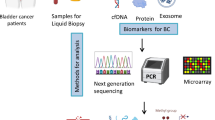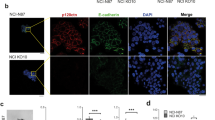Abstract
Background
Von Hippel–Lindau (VHL) disease is an autosomal dominant hereditary tumor syndrome with an incidence of approximately 1/36,000. VHL disease-associated clear cell renal cell carcinoma (ccRCC) is the most common congenital RCC. Although recent advances in treating RCC have improved the long-term prognosis of patients with VHL disease, kidney cancer is still the leading cause of death in these patients. Therefore, finding new targets for diagnosing and treating VHL disease-associated ccRCC is still essential.
Methods
In this study, we collected matched tumor tissues and normal samples from 25 patients with VHL disease-associated ccRCC, diagnosed and surgically treated in the Department of Urology, Peking University First Hospital. After screening, we performed whole genome bisulfite sequencing (WGBS) on 23 pairs of tissues and RNA-seq on 6 pairs of tissues. And we also compared the VHL disease-associated ccRCC transcriptome data with the sporadic ccRCC transcriptome data from the The Cancer Genome Atlas (TCGA) public database
Results
We found that the methylation level of VHL disease-associated ccRCC tumor tissues was significantly lower than that of normal tissues. The tumor tissues showed a difference in the copy number of 3p loss and 5q and 7q gain compared with normal tissues. We integrated RNA-seq and WGBS data to reveal methylation candidate genes associated with VHL disease-associated ccRCC; our results showed 124 hypermethylated and downregulated genes, and 245 hypomethylated and upregulated genes. By comparing the VHL disease-associated ccRCC transcriptome data with the sporadic ccRCC transcriptome data from the TCGA public database, we found that the major pathways of differential gene enrichment differed between them.
Conclusions
Our study mapped the multiomics of copy number variation, methylation and mRNA level changes in tumor and normal tissues of clear cell renal cell carcinoma with VHL syndrome, which provides a solid foundation for the mechanistic study, biomarker screening, and therapeutic target discovery of clear cell renal cell carcinoma.







Similar content being viewed by others
References
Girgis H, et al. Lactate dehydrogenase A is a potential prognostic marker in clear cell renal cell carcinoma. Mol Cancer. 2014;13(1):101.
Znaor A, et al. International variations and trends in renal cell carcinoma incidence and mortality. Eur Urol. 2015;67(3):519–30.
Wong MCS, et al. Incidence and mortality of kidney cancer: temporal patterns and global trends in 39 countries. Sci Rep. 2017;7(1):15698.
Gu Y-F, et al. Modeling renal cell carcinoma in mice: Bap1 and Pbrm1 inactivation drive tumor GradeBap1 and Pbrm1 loss drives tumor grade in ccRCC. Cancer Discov. 2017;7(8):900–17.
Bukowski RM. Natural history and therapy of metastatic renal cell carcinoma: the role of interleukin-2. Cancer Interdiscip Int J Am Cancer Soc. 1997;80(7):1198–220.
Torre LA, et al. Global cancer statistics, 2012. CA Cancer J Clinicians. 2015;65(2):87–108.
Pilar and Laguna, Re: axitinib versus placebo as an adjuvant treatment of renal cell carcinoma: results from the phase III, randomized ATLAS trial. J Urol. 2019.
Courtney KD, et al. Phase I dose-escalation trial of PT2385, a first-in-class hypoxia-inducible factor-2α antagonist in patients with previously treated advanced clear cell renal cell carcinoma. J Clin Oncol. 2018;36(9):867.
Hu L, et al. TBK1 Is a synthetic lethal target in cancer with VHL lossTBK1 is a novel therapeutic target in cancer with VHL loss. Cancer Discov. 2020;10(3):460–75.
Walther MM, et al. Prevalence of microscopic lesions in grossly normal renal parenchyma from patients with von Hippel-Lindau disease, sporadic renal cell carcinoma and no renal disease: clinical implications. J Urol. 1995;154(6):2010–5.
Nielsen SM, et al. Von Hippel-Lindau disease: genetics and role of genetic counseling in a multiple neoplasia syndrome. American Society of Clinical Oncology; 2016.
Czarniecki M, et al. Imaging findings of hereditary renal tumors, a review of what the radiologist should know. Eur J Radiol. 2018;101:8–16.
Herring JC, et al. Parenchymal sparing surgery in patients with hereditary renal cell carcinoma: 10-year experience. J Urol. 2001;165(3):777–81.
Yim JH, et al. Identification of tissue-specific DNA methylation signatures for thyroid nodule diagnostics. Clin Cancer Res. 2019;25(2):544–51.
Galloway TJ, et al. A phase I study of CUDC-101, a multitarget inhibitor of HDACs, EGFR, and HER2, in combination with chemoradiation in patients with head and neck squamous cell carcinomaCUDC-101 plus cisplatin-radiotherapy for HNSCC. Clin Cancer Res. 2015;21(7):1566–73.
Iqbal MA, et al. Preliminary study on the sequencing of whole genomic methylation and transcriptome-related genes in thyroid carcinoma. Cancers. 2022;14(5):1163.
Suzuki A, et al. Aberrant transcriptional regulations in cancers: genome, transcriptome and epigenome analysis of lung adenocarcinoma cell lines. Nucleic Acids Res. 2014;42(22):13557–72.
Lasseigne BN, et al. DNA methylation profiling reveals novel diagnostic biomarkers in renal cell carcinoma. BMC Med. 2014;12(1):1–10.
Kawai Y, et al. Methylation level of the RASSF1A promoter is an independent prognostic factor for clear-cell renal cell carcinoma. Ann Oncol. 2010;21(8):1612–7.
Morris MR, et al. Genome-wide methylation analysis identifies epigenetically inactivated candidate tumour suppressor genes in renal cell carcinoma. Oncogene. 2011;30(12):1390–401.
Buysschaert I, et al. Genetics, epigenetics and pharmaco-(epi) genomics in angiogenesis. J Cell Mol Med. 2008;12(6b):2533–51.
Young AC, et al. Analysis of VHL gene alterations and their relationship to clinical parameters in sporadic conventional renal cell carcinoma VHL and sporadic renal cell carcinoma. Clin Cancer Res. 2009;15(24):7582–92.
Robinson CM, et al. Consequences of VHL loss on global DNA methylome. Sci Rep. 2018;8(1):3313.
Menezo YJ, et al. Oxidative stress and alterations in DNA methylation: two sides of the same coin in reproduction. Reprod Biomed Online. 2016;33(6):668–83.
Mao Y, et al. Genome-wide methylation and expression analyses reveal the epigenetic landscape of immune-related diseases for tobacco smoking. Clin Epigenet. 2021;13(1):1–14.
Cheng C, et al. Understanding transcriptional regulation by integrative analysis of transcription factor binding data. Genome Res. 2012;22(9):1658–67.
Ip SC, Lin S-W, Lai K-M. An evaluation of the performance of five extraction methods: chelex® 100, QIAamp® DNA blood mini kit, QIAamp® DNA investigator kit, QIAsymphony® DNA Investigator® kit and DNA IQ™. Sci Justice. 2015;55(3):200–8.
Zhou Y, et al. Metascape provides a biologist-oriented resource for the analysis of systems-level datasets. Nat Commun. 2019;10(1):1–10.
Petrella BL, Brinckerhoff CE. Tumor cell invasion of von Hippel Lindau renal cell carcinoma cells is mediated by membrane type-1 matrix metalloproteinase. Mol Cancer. 2006;5(1):1–14.
Liu Q, et al. Transcriptome-wide signatures of tumor stage in kidney renal clear cell carcinoma: connecting copy number variation, methylation and transcription factor activity. Genome Med. 2014;6(12):1–12.
Artemov AV, et al. An IDH-independent mechanism of DNA hypermethylation upon VHL inactivation in cancer. Epigenetics. 2021;17(8):894–905.
Artemov AV, et al. An IDH-independent mechanism of DNA hypermethylation upon VHL inactivation in cancer. Epigenetics. 2022;17(8):894–905.
Aganezov S, et al. Comprehensive analysis of structural variants in breast cancer genomes using single-molecule sequencing. Genome Res. 2020;30(9):1258–73.
Irizarry RA, et al. Genome-wide methylation analysis of human colon cancer reveals similar hypo-and hypermethylation at conserved tissue-specific CpG island shores. Nat Genet. 2009;41(2):178.
Nojima M, et al. Global, cancer-specific microRNA cluster hypomethylation was functionally associated with the development of non-B non-C hepatocellular carcinoma. Mol Cancer. 2016;15(1):1–15.
Shen C, et al. Genetic and functional studies implicate HIF1α as a 14q kidney cancer suppressor GeneHIF1α Is a 14q kidney cancer suppressor gene. Cancer Discov. 2011;1(3):222–35.
Hsieh JJ, et al. Chromosome 3p loss–orchestrated VHL, HIF, and epigenetic deregulation in clear cell renal cell carcinoma. J Clin Oncol. 2018;36(36):3533.
Wan G, et al. Hypoxia-induced MIR155 is a potent autophagy inducer by targeting multiple players in the MTOR pathway. Autophagy. 2014;10(1):70–9.
Li B, et al. Orally administered particulate β-glucan modulates tumor-capturing dendritic cells and improves antitumor T-cell responses in cancer particulate β-glucan elicits antitumor T-cell responses. Clin Cancer Res. 2010;16(21):5153–64.
Ni J, et al. Sustained effector function of IL-12/15/18-preactivated NK cells against established tumors. J Exp Med. 2012;209(13):2351–65.
Bruno TC. B cells to the forefront of immunotherapy. Nature. 2020;577(7791):474.
Brown PO, Palmer C. The preclinical natural history of serous ovarian cancer: defining the target for early detection. PLoS Med. 2009;6(7): e1000114.
Pozo K, et al. The role of Cdk5 in neuroendocrine thyroid cancer. Cancer Cell. 2013;24(4):499–511.
Brandt A, et al. Age of onset in familial cancer. Ann Oncol. 2008;19(12):2084–8.
Anderson MA, et al. Alcohol and tobacco lower the age of presentation in sporadic pancreatic cancer in a dose-dependent manner: a multicenter study. Am J Gastroenterol. 2012;107(11):1730.
Shuch B, et al. Defining early-onset kidney cancer: implications for germline and somatic mutation testing and clinical management. J Clin Oncol. 2014;32(5):431.
Wang J, et al. Natural history of Von Hippel–Lindau disease-associated and sporadic clear cell renal cell carcinoma: a comparative study. J Cancer Res Clin Oncol. 2021:1–11.
Gattolliat C-H, et al. Integrative analysis of dysregulated microRNAs and mRNAs in multiple recurrent synchronized renal tumors from patients with von Hippel-Lindau disease. Int J Oncol. 2018;53(4):1455–68.
Beroukhim R, et al. Patterns of gene expression and copy-number alterations in von-hippel lindau disease-associated and sporadic clear cell carcinoma of the kidney. Can Res. 2009;69(11):4674–81.
Acknowledgements
The authors thank Novogene Co. Ltd. for the sequencing service and The Cancer Genome Atlas for providing high-quality data.
Author information
Authors and Affiliations
Corresponding authors
Ethics declarations
Funding
This work was supported by the National High-Level Hospital Clinical Research Funding (High-Quality Clinical Research Project of Peking University First Hospital, 2022CR75), National Natural Science Foundation of China (no. 82141103; 82172617; 82172665; 81872081), Scientific Research Seed Fund of Peking University First Hospital (2021SF01; 2023SF40), Capital’s Funds for Health Improvement and Research (2022-2-4074), and Sino-Russian Mathematics Center.
Data availability
The data that support the findings of this study are available in the Genome Sequence Archive for Human (GSA-Human) (https://ngdc.cncb.ac.cn/gsa-human/).
Conflict of interest
The authors Lei Li, Hainan Bao, Yawei Xu, Wuping Yang, Zedan Zhang, Kaifang Ma, Kenan Zhang, Jingcheng Zhou, Yanqing Gong, Weimin Ci, and Kan Gong declare that they have no conflicts of interest that might be relevant to the contents of this manuscript.
Ethical approval
Approval for the study was granted by the ethics committee of Peking University First Hospital, with the assigned number IRB00001052-18004. The study was performed in accordance with the ethical standards as laid down in the 1964 Declaration of Helsinki and its later amendments or comparable ethical standards.
Consent (participation and publication)
Verbal informed consent was obtained from the patients for their anonymized information to be published in this article.
Author contributions
K.G. and W.M.C. were responsible for the overall planning of the study. L.L., H.N.B., and Y.W.X. mainly directed bioinformatics analysis and wrote the paper. W.P.Y., Z.D.Z., and K.F.M. were mainly responsible for the compilation of experimental data. K.N.Z. collected and preserved the samples. J.C.Z. and Y.Q.G. mainly polished the article. All authors contributed critical review of the manuscript, revisions, and have approved its submission.
Code availability
Not applicable.
Supplementary Information
Below is the link to the electronic supplementary material.
Supplementary file 4 Supplementary Table 4. Tumor versus Normal_hypomethylation_anno (XLSX 13132 KB)
40291_2023_663_MOESM5_ESM.xlsx
Supplementary file 5 Supplementary Table 5-1. Tumor versus Normal_DMR_up_promoter_metascape_annotation. Supplementary Table 5-2. Tumor versus Normal_DMR_up_promoter_metascape_enrichment (XLSX 234 KB)
40291_2023_663_MOESM6_ESM.xlsx
Supplementary file 6 Supplementary Table 6-1. Tumor versus Normal_DMR_down_promoter_metascape_annotation. Supplementary Table 6-2. Tumor versus Normal_DMR_down_promoter_metascape_enrichment (XLSX 508 KB)
Rights and permissions
Springer Nature or its licensor (e.g. a society or other partner) holds exclusive rights to this article under a publishing agreement with the author(s) or other rightsholder(s); author self-archiving of the accepted manuscript version of this article is solely governed by the terms of such publishing agreement and applicable law.
About this article
Cite this article
Li, L., Bao, H., Xu, Y. et al. Preliminary Study of Whole-Genome Bisulfite Sequencing and Transcriptome Sequencing in VHL Disease-Associated ccRCC. Mol Diagn Ther 27, 741–752 (2023). https://doi.org/10.1007/s40291-023-00663-0
Accepted:
Published:
Issue Date:
DOI: https://doi.org/10.1007/s40291-023-00663-0




